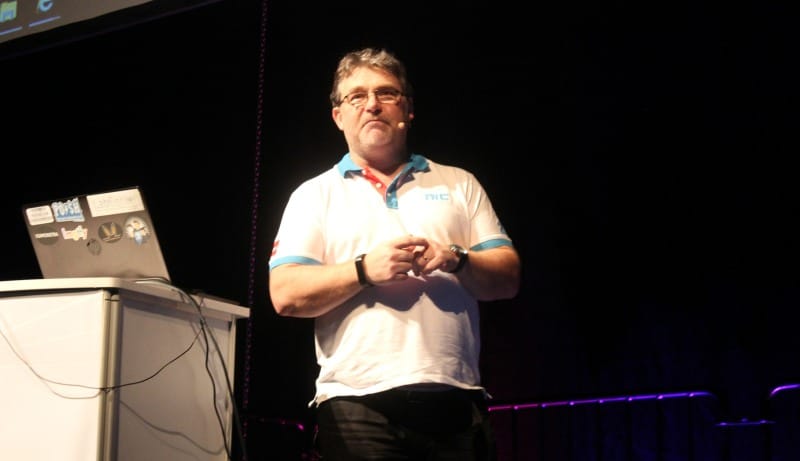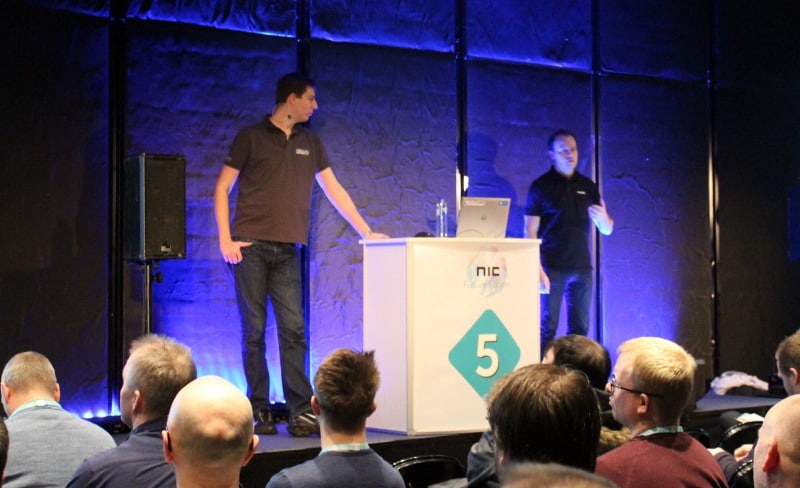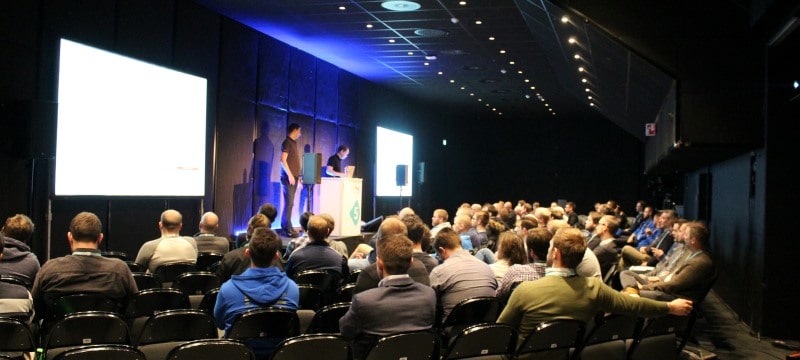NIC is Norway’s premier IT conference, showcasing whats new in the world of IT security and infrastructure. I was fortunate to attend the conference a few days ago and many of you will know I have recently joined TrueSec AB, so for the purpose of this post I am going to focus on the sessions from my follow colleagues, Nickolaj Andersen, Mikael Nystrom and Peter Lofgren.
The Venue
NIC 2018 was hosted in the Oslo Spektrum, a multi purpose arena which today is primarily used as a concert venue. The venue was certainly more than large enough to cater for the approx 1000 attendees, and the vendor stalls located on the ground floor.
Each of the tracks was hosted in a separate “room”, the rooms were actually only curtain partitions but even with the background noise from the other sessions, the sound engineers did a great job of ensuring the speaker was heard at all times.
The Sessions
Say Hi and Welcome to the new Server Manager – Project Honolulu!
In the first session of the week on server and client platform track Mikael Nystrom talked through the development of what is the replacement for the MMC console, Project Honolulu. The new HTML5 platform offers significant advantages over the MMC console that has been around with us since the days of Windows 2000. The ability to use an RDP session through a cross platform browser has huge benefits over the old model of requiring a VPN and a full RDP client for instance, and that is only one of the advantages.
The installation is extremely lightweight, using a proprietary web server and gateway service. The service interacts with your local server infrastructure using WinRM and PowerShell to leverage powerful functions. For instance if you want to add a network card to your Hyper-V VM’s then this can be achieved at the click of a button, all without having to switch between consoles.
For more information on Project Honoulu please visit – https://docs.microsoft.com/en-us/windows-server/manage/honolulu/honolulu
2 years of Windows 10 – Lessons learned
In this session presented by Peter Lofgren, the focus was on what early adopters have faced since Windows 10 build 1507 shipped.
With the focus now on Windows 7 support ending in 2020, organisations across the globe are focusing their efforts to move onto the Windows 10 platform. Traditionally this would have been seen as platform upgrade, as much the same as the upgrade from Window XP to Windows 7 and for some on to Windows 8/8.1. Moving to Windows 10 however needs a more considered approach for the future, the reasons why were outlined in this session.
With the new Semi Annual Channel approach that Microsoft has adopted, organisations now need to not only plan to move to Windows 10, but also plan to test two build releases per year. Peter discussed the road from the initial build right up to 1709, the lessons learned, how to take some of the pain out of the testing process through the use of cloud based services such as Windows Analytics Upgrade Readiness. Using big data analytics you can very quickly get an overview of the applications in your environment and how they stack up in terms of compatibility, taking the time and effort out of potentially testing thousands of applications.
More information on Windows Upgrade Analytics can be found at – https://www.microsoft.com/itshowcase/Article/Content/846/Insights-in-Windows-Upgrade-Analytics-accelerate-Windows-10-upgrades
Windows servicing versus the task sequence upgrade model was discussed in the session, providing attendees with real life experiences for both upgrade methods. Using the task sequence approach, the flexibility to selectively remove and re-add software during the task sequence provides a more controlled approach. For instance anti-virus software has been one of the most problematic areas during upgrades.
Other area’s covered in this session include how to handle the legacy MBR BIOS to UEFI as part of the Windows upgrade TS, along with deployment of drivers through dynamic community driven tools.
Modernize ConfigMgr OSD with Community Tools
In this jointly hosted session, Nickolaj Andersen and Peter Lofgren took the audience through the tools that we have been creating here at SCConfigMgr.com to aid those making the move to Windows 10. Demonstrations of our Modern BIOS/Driver Management solutions utilising our Driver Automation Tool and ConfigMgr Web Service were presented.
The audience were shown how the monotonous steps to download, extract, import and add drivers and BIOS updates into your production task sequences can be fully automated in a single set it and forget it approach. As these tools are community based, feedback is instantly (well as quickly as we can) added into each release of the tool/script.
The OSD Front End tool was also demonstrated, a tool that provides a “all of the settings you need” approach without having to go down the path of creating UDI task sequences. Nickolaj took this opportunity to lunch an update to his OSD Front End tool, adding many new features including Active Directory validation.
For further information on the update, please visit – https://msendpointmgr.com/2018/02/02/configmgr-osd-frontend-version-1-3-0-released/
















[…] you want a some more details about what me and my coworkers did at NIC check out this post https://msendpointmgr.com/2018/02/07/nic-2018-future-edition/ from […]
Hi,
Once again, I’d like to thank you all for the tremenduous work you’re doing. I heavily use your Tools and I adapted some of them to cover additionnal use cases (for updating legacy computers BIOS mainly).
I will send you the modified scripts.
Regards
Thanks David! Glad to hear you are not only using our tools but also tailoring them for your own environment. I look forward to your feedback.
Maurice